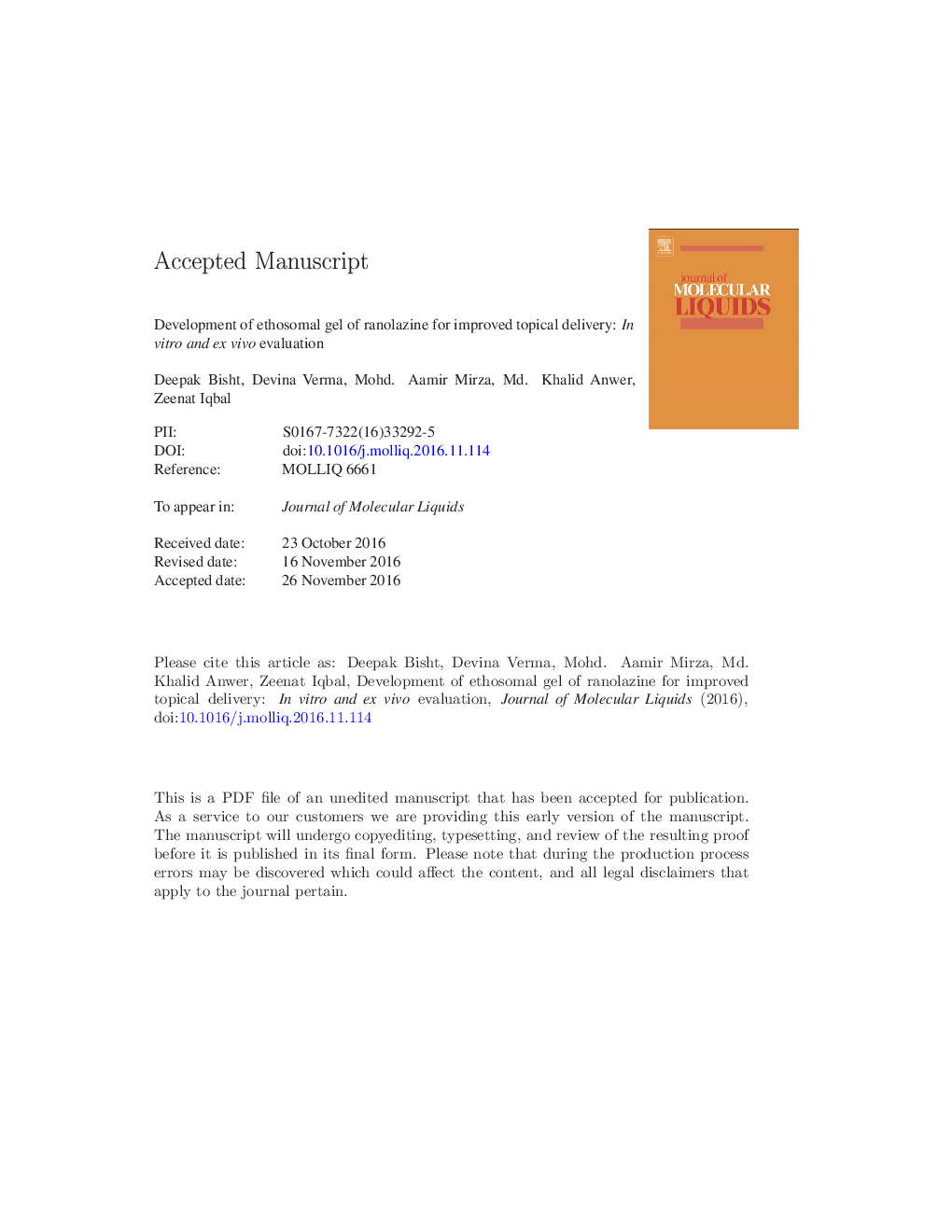| Article ID | Journal | Published Year | Pages | File Type |
|---|---|---|---|---|
| 5409253 | Journal of Molecular Liquids | 2017 | 32 Pages |
Abstract
Ranolazine loaded ethosomal system were developed by varying the proportion of soya lecithin (0.9-1.5% w/v) and ethanol (20-40% w/v). The prepared ethosomal formulations (RET1-RET9) were evaluated in vitro for vesicle shape and size, zeta potential, entrapment efficiency, drug release and ex vivo permeation studies. Developed ethosomal system showed a vesicle size ranging from 136 to 516 nm with smooth surface and entrapment efficiency of 47-89%. Optimized ethosome (RET6) had vesicle size of 136.1 ± 11 nm with a low PDI value 0.195, zeta potential â 20.9 mV, % EE of 89.34% and drug release of 80.85 ± 1.8% in 24 h. SEM and TEM images confirmed that developed optimized ethosome was spherical in shape with a smooth surface. The confocal laser scanning microscopy (CLSM) showed a remarkable penetration capacity of vesicles (255 μm) as compared to hydroethanolic solution of the drug. Ethosomal gel were developed by incorporation of optimized ethosomal suspension (RET6) into 1% carbopol gel base and characterized by physical evaluation and rheological studies. The transdermal flux for optimized ethosome (RET6) and ethosomal gel (REG2) were found to be 13 and 11 times those of hydroethanolic solution respectively. These overall findings suggested that ethosomal transdermal gel holds an excellent potential for transdermal ranolazine delivery.
Keywords
Related Topics
Physical Sciences and Engineering
Chemistry
Physical and Theoretical Chemistry
Authors
Deepak Bisht, Devina Verma, Mohd. Aamir Mirza, Md. Khalid Anwer, Zeenat Iqbal,
